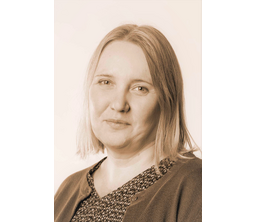Presentation research on renaissance monuments in the Czech lands

On January 7, 2025, the project ‘Research on Renaissance monuments in the Czech lands - presentation of Lutherans in public space’ will be presented at CICS as part of the Erasmus+ Programme
The lecture will be held in English by Zdeňka Míchalová and Vladislava Říhová from the Department of Humanities, Faculty of Restoration at the University of Pardubice.
It takes place from
14:00 to 16:00 o’clock in room 120 at CICS, Ubierring 40 in Cologne.
We are looking forward to many visitors!
Information on the Research Project:
Research on Renaissance monuments in the Czech lands - presentation of Lutherans in public space (examples of the towns of Slavonice and Moravská Třebová)
Professors Zdeňka Míchalová – Vladislava Říhová, Department of Humanities, Faculty of Restoration, University of Pardubice
The Faculty of Restoration at the University of Pardubice has been involved in the research and restoration of wall paintings, graffiti and stone monuments in the towns of Slavonice and Moravská Třebová for the past twenty years. Both of these sites are connected by the exceptional extent of preservation of Renaissance monuments and their connection with Lutheran culture. At the same time, these sites are interestingly complementary – in Slavonice, mainly representative burgher houses have been preserved (facades, interior wall paintings), in Moravská Třebová there are epigraphic and sepulchral monuments and especially the town cemetery church. The lecture will present mainly art historical research of the sites with an overlap into the field of restoration.
The town of Slavonice, situated on the Czech-Moravian-Austrian border, belonged to an important Catholic noble family of the Lords of Hradec in the 16th century. However, thanks to the contacts of the German-speaking population of the town with the neighbouring non-Catholic region of Lower Austria, Lutheran pastors were active in the town from the middle of the 16th century. The townspeople also proclaimed their faith in the form of visual culture in public space - they created sgraffiti and paintings with Lutheran themes on the facades and in representative rooms of their houses. The three interiors of the houses from the second half of the 16th century with wall paintings/sgraffiti based on Hans Brosamer's prints are particularly remarkable. In one case, it is the Apocalypse cycle with a clearly anti-Catholic meaning, and in the other cases, christological themes with miracles and parables supplemented by texts based on Luther's translation of the New Testament. The construction of the houses and their decoration was carried out by a local group of craftsmen, who also worked on the orders of the nobility and in nearby Austria.
Moravská Třebová is situated near the border of the historical lands of Bohemia and Moravia. It was founded in the middle of the 13th century by the German-speaking population. In the 16th century it belonged to the important noble family of the Lords of Boskovice. In 1550 the parish church was taken over by the Lutherans. Pastors came here from Saxony or Silesia. There was a Latin school in the town with rectors ordained from Wittenberg. From the middle of the 16th century, members of the building crafts settled here. The members of the so-called Italian community were related to each other and controlled all building contracts. A number of epigraphic sources have been preserved from this period. Most of them are moral inscriptions carved on portals or on consoles in the ground-floor spaces of houses. Notable is the decoration of the Latin school from 1566 with Latin and Greek inscriptions on the facades and in the interior. A cemetery was founded on the hill above the town in 1499. The cemetery church is still preserved in its Renaissance form, its interior underwent Baroque modifications during the recatholicization. More than 50 tombstones of the town's inhabitants (including a number of clergymen) are kept in the museum next to the church. These, together with wooden epitaphs (of which only one is still preserved), served as a representation and memory of individual bourgeois families. At present, in cooperation with the faculty, an architectural survey of the church is being carried out.
Oktober 2024








